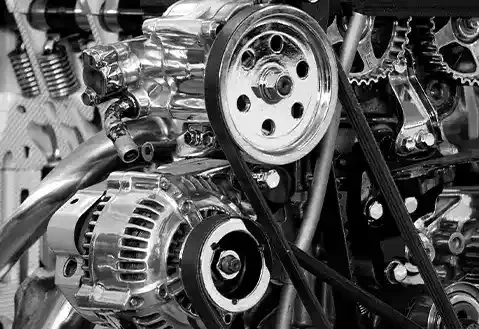- Arabic
- French
- Russian
- Spanish
- Portuguese
- Turkish
- Armenian
- English
- Albanian
- Amharic
- Azerbaijani
- Basque
- Belarusian
- Bengali
- Bosnian
- Bulgarian
- Catalan
- Cebuano
- Corsican
- Croatian
- Czech
- Danish
- Dutch
- Afrikaans
- Esperanto
- Estonian
- Finnish
- Frisian
- Galician
- Georgian
- German
- Greek
- Gujarati
- Haitian Creole
- hausa
- hawaiian
- Hebrew
- Hindi
- Miao
- Hungarian
- Icelandic
- igbo
- Indonesian
- irish
- Italian
- Japanese
- Javanese
- Kannada
- kazakh
- Khmer
- Rwandese
- Korean
- Kurdish
- Kyrgyz
- Lao
- Latin
- Latvian
- Lithuanian
- Luxembourgish
- Macedonian
- Malgashi
- Malay
- Malayalam
- Maltese
- Maori
- Marathi
- Mongolian
- Myanmar
- Nepali
- Norwegian
- Norwegian
- Occitan
- Pashto
- Persian
- Polish
- Punjabi
- Romanian
- Samoan
- Scottish Gaelic
- Serbian
- Sesotho
- Shona
- Sindhi
- Sinhala
- Slovak
- Slovenian
- Somali
- Sundanese
- Swahili
- Swedish
- Tagalog
- Tajik
- Tamil
- Tatar
- Telugu
- Thai
- Turkmen
- Ukrainian
- Urdu
- Uighur
- Uzbek
- Vietnamese
- Welsh
- Bantu
- Yiddish
- Yoruba
- Zulu
டிசம்பர் . 04, 2024 10:14 Back to list
transmission belt\/power transmission belt
Understanding Power Transmission Belts
Power transmission belts are crucial components in various mechanical systems, enabling the transfer of power between different machine parts. They play an indispensable role in numerous industries, from automotive to manufacturing, ensuring that machinery operates smoothly and efficiently. In this article, we will explore the types, functions, and applications of power transmission belts, as well as the factors to consider when selecting the right belt for a specific application.
Types of Power Transmission Belts
There are several types of power transmission belts, each designed for specific applications and operating conditions. The most common types include
1. V-belts Characterized by their trapezoidal cross-section, V-belts are widely used due to their efficiency in transferring power with minimal slippage. They are suitable for high-load applications and are often found in automotive engines and heavy machinery.
2. Flat belts These belts have a rectangular cross-section and are typically used in low-speed, low-torque applications. Flat belts are commonly used in conveyors and light machinery due to their simplicity and cost-effectiveness.
3. Timing belts Featuring teeth on their inner surface, timing belts ensure precise synchronization between rotational elements. These belts are essential in applications where timing is critical, such as in automotive camshafts and printing presses.
4. Poly-V belts Also known as serpentine belts, poly-V belts feature multiple longitudinal ribs, allowing for a compact design and efficient power transmission. They are widely used in modern automotive engines, where they drive various accessories such as alternators and water pumps.
Functions of Power Transmission Belts
The primary function of power transmission belts is to transfer rotational power from one component to another. They do this through friction or positive engagement, depending on the type of belt used. In addition to power transmission, belts often serve several secondary functions
- Motion transfer Belts facilitate the movement of machine parts, enabling synchronized operations in complex machinery.
- Speed regulation By altering the sizes of pulleys, belts can change the speed of driven components, allowing for versatile performance in various applications.
- Shock absorption Belts can dampen shock loads and vibrations, protecting connected components and extending their lifespan.
transmission belt\/power transmission belt

Applications of Power Transmission Belts
Power transmission belts are utilized in an extensive range of applications across multiple industries. Their versatility makes them suitable for
- Automotive systems V-belts and timing belts are critical in transferring power within vehicles, driving essential components like alternators and camshafts.
- Manufacturing machinery Flat belts and poly-V belts are commonly used in conveyors and processing equipment, facilitating the movement of materials through production lines.
- Household appliances Many appliances, such as washing machines and vacuum cleaners, employ belts to transfer power from motors to operational components.
- Agricultural equipment Power transmission belts are integral to various farming machines, enabling the operation of equipment such as tractors and harvesters.
Selecting the Right Power Transmission Belt
Choosing the appropriate power transmission belt requires careful consideration of several factors, including
- Load requirements Understanding the torque and load specifications of the application is vital in selecting an appropriately rated belt.
- Environmental conditions Exposure to extremes of temperature, moisture, and chemicals can affect belt performance. Selecting materials that can withstand these conditions is essential.
- Belt length and width Ensuring the correct dimensions are critical for maintaining optimal performance and minimizing wear.
- Compatibility The belt must be compatible with the pulleys and other components in the system to ensure reliable operation.
In conclusion, power transmission belts are fundamental to the functioning of many mechanical systems. By understanding the types, functions, and applications of these belts, as well as the selection criteria, engineers and technicians can effectively utilize them to improve the performance and efficiency of their machinery.
-
Korean Auto Parts Timing Belt 24312-37500 For Hyundai/Kia
NewsMar.07,2025
-
7PK2300 90916-T2024 RIBBED BELT POLY V BELT PK BELT
NewsMar.07,2025
-
Chinese Auto Belt Factory 310-2M-22 For BMW/Mercedes-Benz
NewsMar.07,2025
-
Chinese Auto Belt Factory 310-2M-22 For BMW/Mercedes-Benz
NewsMar.07,2025
-
90916-02660 PK Belt 6PK1680 For Toyota
NewsMar.07,2025
-
drive belt serpentine belt
NewsMar.07,2025

